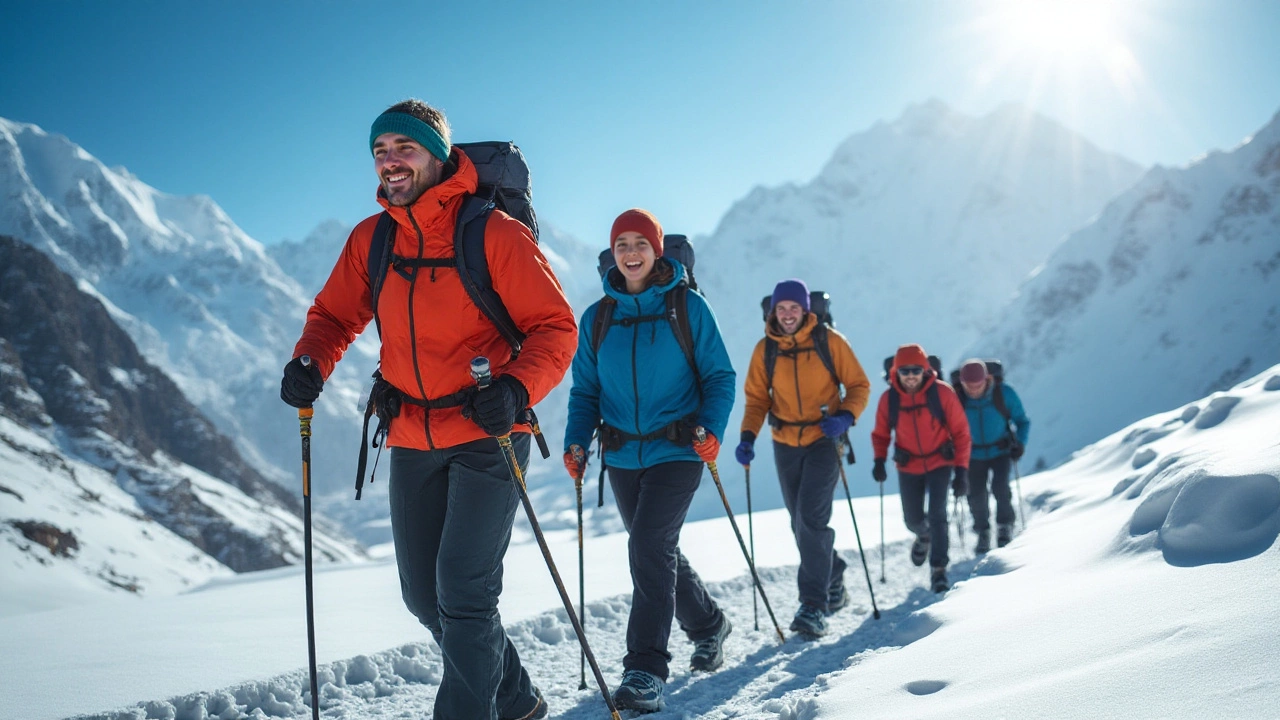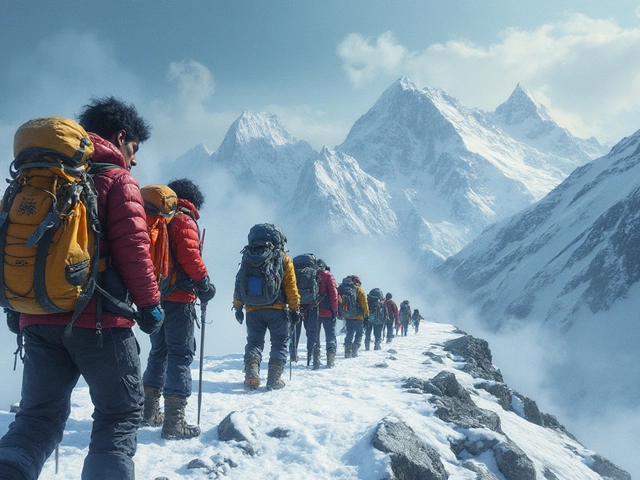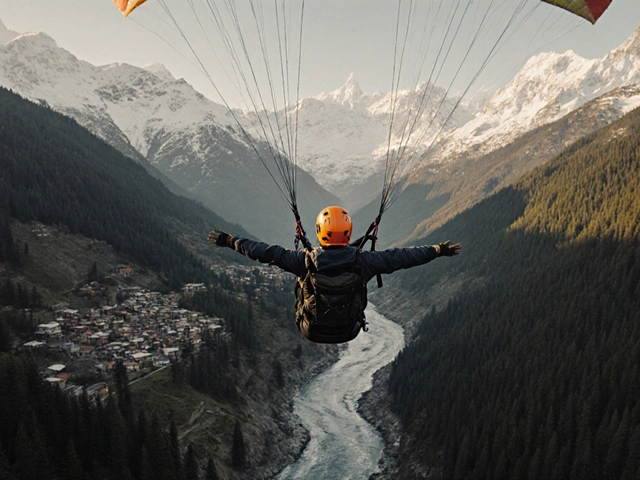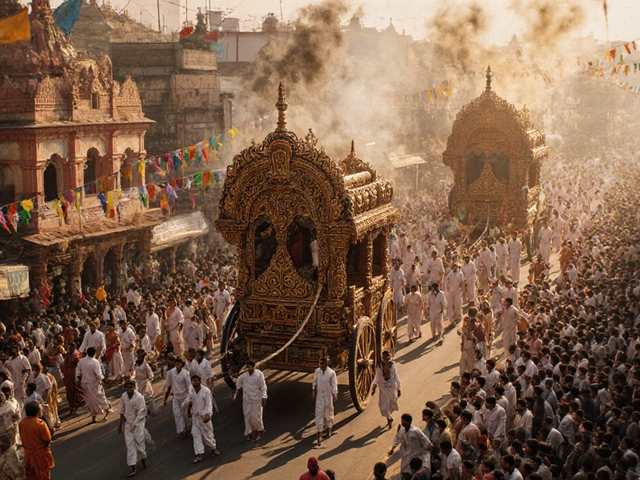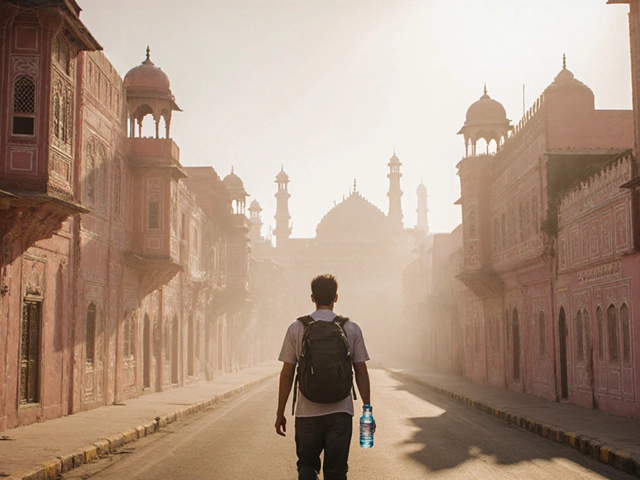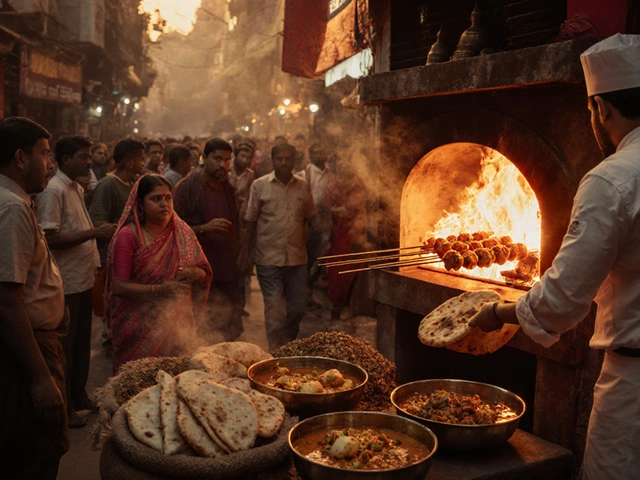Hiking across the diverse and breathtaking landscapes of India is an experience like no other. From the highest peaks in the Himalayas to the lush trails in the Western Ghats, each trek offers its own unique set of challenges and rewards. One of the key elements to ensuring a safe and enjoyable hiking adventure is understanding the 3 Layer Rule.
This rule is all about insulation, breathability, and protection from the elements. It's not just about throwing on a jacket; it's a strategic approach to dressing that allows hikers to adapt to ever-changing weather conditions while maintaining comfort and safety. So, whether you're planning a winter trek in Ladakh or a summer hike in the Nilgiris, mastering the layering system is an essential skill for every outdoor enthusiast.
- Understanding the 3 Layer Rule
- Base Layer Essentials
- Mid Layer Importance
- Outer Layer Protection
- Practical Tips for Indian Terrains
Understanding the 3 Layer Rule
When it comes to hiking layers, the concept of the 3 Layer Rule stands out as a game-changer for avid trekkers and casual strollers alike. The method stems from the need to stay comfortable and protected across varying climates and weather patterns often encountered in the wilderness. From scorching days to chilly nights, the best approach is to adopt a strategic layering technique that can be easily adapted as conditions change. It’s similar to having an on-the-go wardrobe that suits every possible scenario. This rule consists of three distinct components: the base layer, the mid layer, and the outer layer. Each of these layers has a particular function, and when used correctly, they form an effective barrier to shield against environmental elements while managing moisture and retaining body heat.
The base layer is primarily responsible for moisture management. It acts as a second skin, wicking sweat away from the body to keep you dry. Many hikers opt for synthetic materials or merino wool, known for their unparalleled efficiency in moisture control. It’s essential to avoid cotton, as it tends to hold onto moisture, leading to discomfort and potential health risks like hypothermia. Once the base layer has done its job, the mid layer takes center stage, offering insulation. Depending on the weather, this could range from a light fleece to a heavier down jacket. The final defense line is the outer layer, designed to protect you from the wind and rain. Usually made from materials such as Gore-Tex, these shells are breathable yet resistant to water and heavy winds, maintaining the hiker’s comfort by curbing exposure to harsh weather.
This adaptable system is celebrated by many outdoor enthusiasts and experts. A famous hiking trainer once said,
"The 3 Layer Rule is not just about fashion; it’s about function. It reflects the wearer's knowledge of nature's unpredictable whims."This philosophy emphasizes an understanding that Mother Nature can be unpredictable, and preparedness is vital. Beyond just the science of clothing, mastering this rule is about ensuring safety and maximizing enjoyment during expeditions. Hiking through India's expansive terrains, from the misty hills of Kerala to the icy trails of Sikkim, makes the use of the 3 Layer Rule incredibly significant, adapting to each region's unique demands.
Imagine yourself ascending the steep paths of the Himalayas, where temperatures can drop dramatically as you scale up. With a proper grip on the layering system, this transition becomes more manageable. You can effortlessly shed your mid-layer during the warm afternoon and don it again as the sun dips behind the mountains. Not just practicality, but layering also allows the personalization of gear configurations. By integrating mindfulness into what you wear, you can cater specifically to your needs, predicting and planning for the imminent climatic shifts typical to hiking in ever-changing environments.
Base Layer Essentials
The base layer is perhaps the most crucial part of the layering system, acting as your body's first line of defense against the unpredictable elements you may encounter on Indian hiking trails. This layer is designed primarily for moisture management, as it comes into direct contact with your skin. The importance of wearing an appropriate base layer cannot be overstated—after all, a wet base layer is both uncomfortable and dangerously chilling, especially in cooler climates. When you're trekking across terrains that range from the chilly heights of Himachal Pradesh to the humid forests of Kerala, selecting the right base layer is a decisive factor for staying comfortable. You would ideally want something that can wick moisture away from your skin efficiently—materials like synthetic fibers or merino wool are excellent choices as they offer breathability and quick-drying properties.
When choosing a base layer, it is important to consider the activity and hiking conditions. Lightweight and ultra-lightweight options are ideal for warm-weather treks, such as those found in Rajasthan's desert treks, while mid-weight options provide extra insulation for cooler climates. Durability, fit, and comfort are important factors; don't overlook them when choosing your hiking layers, as they are deciding factors in maintaining your ease on the trail. Wearing ill-fitting clothing can lead to chafing or restriction of movement, which are issues no hiker should face. In some cases, base layers with added antimicrobial treatments can prove beneficial, reducing body odor during multi-day treks. Emphasize the need for a snug yet flexible fit, allowing freedom of movement.
"The concept of layering based on specific activities trace roots back to the Scandinavian outdoors method, which emphasizes adaptability to the environment," suggests Roger Johnson, a renowned outdoor attire specialist. As Indian terrains are incredibly diverse, adopting this mindset is especially advantageous for trekkers aiming to prepare for any eventuality.
It's essential to keep in mind that the base layer alone is not intended to provide significant warmth—additional layers handle the task of locking in heat. Instead, its main function is to saturate moisture away from your body, ensuring a dry and thermal-regulated hike. A well-chosen base layer also complements the rest of the clothing system, enhancing the overall effectiveness of the hiking layers. Additionally, it is eco-friendly alternatives made from recycled or natural fibers, as they echo environmentally conscious travel. As the trekking trails in India continue to draw global attention, this base layer component plays a pivotal role in pioneering innovative gear that meets the demands of active explorers everywhere.
Finally, when embarking on any outdoor journey, maintaining hygiene is vital. While most focused adventurers pack lightly, consider carrying extra base layers to transition between outings and preserve freshness. As lightweight categories are space-efficient, carrying a spare is pragmatic. There is no end to the Delhi adventures or Goa coastal hikes awaiting that untamed spirit. As you hike, rest assured knowing your choice of a strategic base layer will be an indispensable ally, seamlessly embracing your escapades with its silent, comforting presence. The true genius of base layers lies in their unassuming design.

Mid Layer Importance
The mid layer is often considered the heart of the layering system, acting as an insulating barrier that retains your body heat without trapping moisture. Its primary role is to hold the warmth that your base layer has worked to trap close to your skin while allowing sweat to escape. Imagine hiking through the awe-inspiring landscapes of the Indian Himalayas; here, temperatures can plummet without much notice. It’s in these moments that a good mid layer, made of materials like fleece or a synthetic blend, often becomes your best friend.
Choosing the right mid layer is a delicate balance. You want something that keeps you warm but not too heavy, allowing flexibility as you navigate rocky terrains and steep inclines. A popular choice among experienced hikers venturing into places like Himachal Pradesh is a fleece jacket. It offers the perfect mix of warmth and breathability, crucial when you are active in cool environments. Some hikers also prefer vests made of down or wool, which can be incredibly effective in keeping the core warm, even if your arms often do the heavy lifting.
What the Experts Say
"Layering is not just about adding on; it’s about understanding how each piece works together to keep you comfortable," says renowned trekking guide Ramesh Singh, who has led expeditions across India's most challenging trails.Hikers must consider the climate and the specific trail conditions when deciding on their mid layer. For regions like Sikkim, where temperatures can vary drastically with altitudinal changes, a slightly heavier mid layer might be advantageous. However, in the balmy conditions of the Eastern Ghats, a lightweight option might suffice.
It's important to remember that not all mid layers are created equal. Modern advancements have brought about fabrics with high moisture-wicking properties, precisely targeting the needs of serious trekkers. With longer treks that expand multiple days, like the famous Chadar Trek, a mid layer that repels odors and dries quickly can be indispensable. This ensures that the trekker remains comfortable and ready for the next leg of the journey. Let’s say, for instance, that the fleece does the trick, but it's also crucial to ensure it fits neither too snug nor too loose, allowing for ease of movement.
The choice of color is often overlooked, yet it can affect the hike. Darker shades of mid layers absorb more heat, advantageous during chilly mornings but potentially excessive by afternoon when the sun decides to come out. On the contrary, lighter colors may not thoroughly warm but offer better visibility in dense, forested trails. So, depending on your trek location in India, you might adjust accordingly.
| Location | Recommended Mid Layer |
|---|---|
| Himalayan Trails | Fleece Jacket |
| Sikkim Treks | Down Vest |
| Western Ghats | Synthetic Blend Sweater |
Outer Layer Protection
The outer layer is the guardian of your hiking attire, tasked with shielding you from the unpredictable elements. When trekking in India, where climatic conditions can range from the monsoon rains in the Western Ghats to the fierce winds in the Himalayas, this layer becomes your most crucial armor. Often referred to as the 'shell layer', its primary role is to protect against wind and water, while also allowing moisture from your inner layers to escape. This intricate balance of protection and breathability is what makes selecting the right outer layer a paramount task for any trekker.
Modern outer layers come in various constructions, including hard shells and soft shells. Hard shells are usually made from robust materials that provide complete waterproofing and are highly wind-resistant. Due to their impermeability, they are perfect for enduring relentless downpours and ferocious gales. Soft shells, on the other hand, offer more flexibility and breathability, best suited for conditions where mild water resistance and light wind protection are sufficient. Choosing between these options depends significantly on the specific Indian trail you're planning to conquer, as each has its own demands.
Attention should also be paid to features such as hood design, pocket placements, and ventilation zips. A well-designed hood that fits snugly over a helmet can be a lifesaver in torrential rain. Conveniently located pockets that are compatible with your backpack will ensure that you have access to essentials without having to stop and remove your gear. Ventilation zips can be crucial, especially in humid climates, allowing excess body heat to escape without exposing you to the elements.
According to the Himalayan Trekkers, "The right outer layer not only protects you from the elements but also maximizes your comfort by effectively managing moisture and wind resistance, thus enhancing your overall trekking experience."
If you're venturing into unpredictable weather zones, it’s also wise to consider outer layers with reflective details or those compatible with layering systems to enhance visibility and adaptability. Various brands are now offering advanced fabric technologies, such as GORE-TEX and eVent, which provide superior waterproofing and breathability, but it’s crucial to check the specific properties and match them with your hiking needs. To make an informed purchase, evaluate the average weather conditions for your chosen Indian trekking destination and equip yourself accordingly, ensuring you're prepared for any weather curveball.
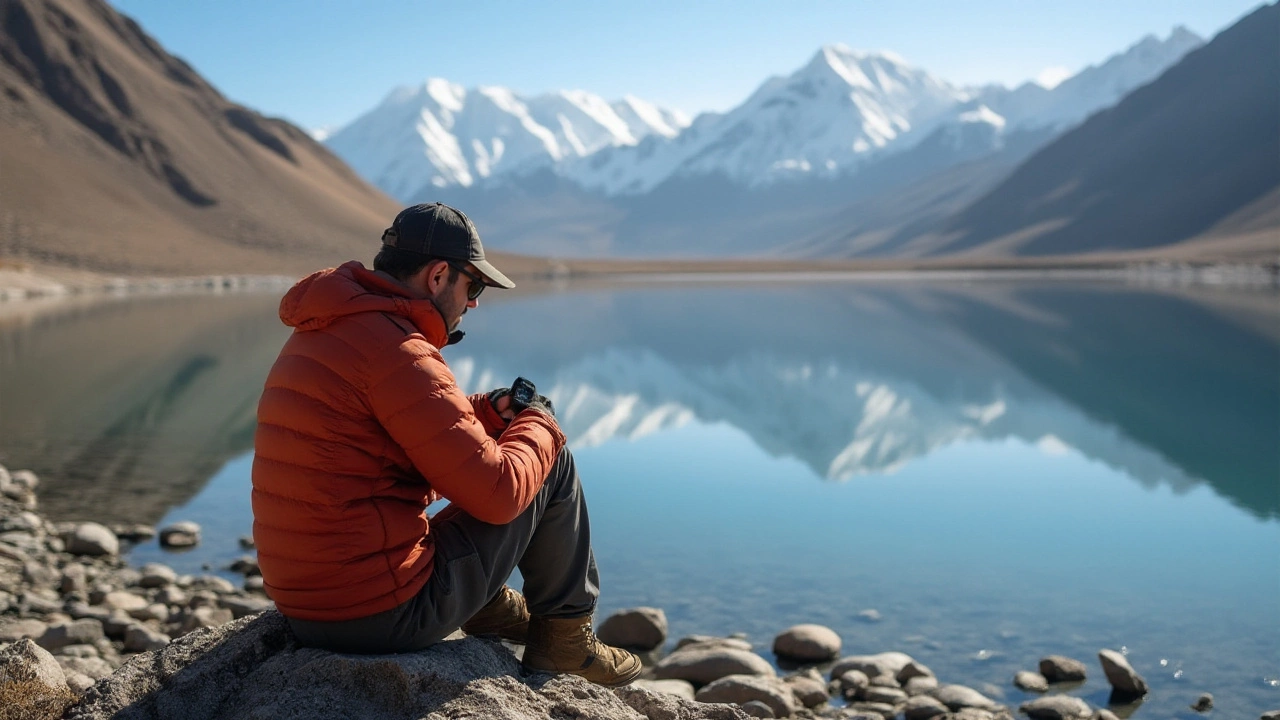
Practical Tips for Indian Terrains
India's diverse geography offers some of the most breathtaking yet challenging trekking experiences in the world. From the snow-capped Himalayas to the hot sands of the Thar Desert, each trek demands a strategic approach to ensure safety and comfort. The varied weather patterns across these terrains require a careful selection of the right hiking layers. Given that weather can switch dramatically within hours, starting out equipped with the appropriate clothing layers can make all the difference. For instance, begin with a moisture-wicking base layer. In India, temperatures fluctuate considerably, even within the same region. Lightweight thermal wear is an excellent choice, managing sweat while maintaining a comfortable body temperature.
The mid-layer is crucial in maintaining warmth during cold climates experienced in higher altitudes like the Great Himalayan National Park. Opt for fleece or lightweight down jackets that trap heat while remaining breathable. As you ascend, the temperature drops, and it's important to adjust your clothing layers accordingly. Using easily foldable jackets can be handy, allowing you to manage your body temperature without needing constant wardrobe shifts.
Outer layers protect against elements such as wind and rain, which are prevalent in monsoon-intensive areas like Kerala's Western Ghats. Waterproof jackets are essential during these periods, offering protection without weighing you down. When venturing into windier areas like the Lahaul and Spiti valleys, windproof layers shield you from harsh breezes, preventing body heat loss. Trekking India also requires handling trails differently. Ensure you test your gear before embarking on your hike. Shoes, for instance, should be broken in to prevent blisters or discomfort, impacting the trekking experience.
Another aspect to consider is the local flora and fauna. In dense forest regions with rich biodiversity, like Assam's Kaziranga, be on the lookout for wildlife. Pay attention to the surroundings, keeping noise levels low to respect ecosystems. Maps or GPS devices become invaluable in such settings, offering guidance when trails become less apparent. Knowing the lay of the land enables better planning for rest stops and water refills. Locals often have extensive knowledge of trails and weather conditions, so taking time to converse can provide invaluable insights.
"The best view comes after the hardest climb." – Unknown
One should always stay hydrated. While it's tempting to ration water during hot and humid hikes, dehydration is a significant risk. Drink small sips regularly, rather than large gulps sporadically. In higher altitudes like those in Sikkim, hydration assists in combating altitude sickness, preparing one for strenuous ascents. Pack snacks high in energy like nuts and berries. Their light weight and nutritional value make them perfect companions for Indian trails.
Packing for unpredictable rain showers is another reality of trekking in India. Consider waterproof bags or covers to protect your valuables. Nothing is worse than damp gear during a multiday trek where drying opportunities are limited. A well-stocked first aid kit rounds out effective preparation. It is always prudent to prepare for the unexpected with bandages, antiseptics, and pain relievers.
